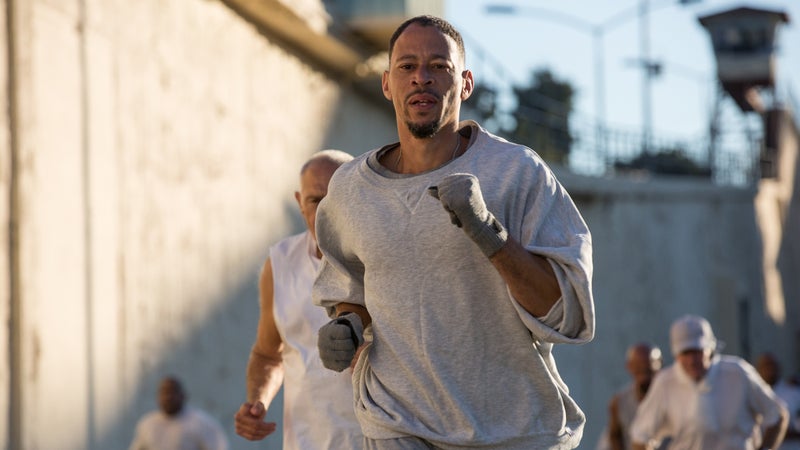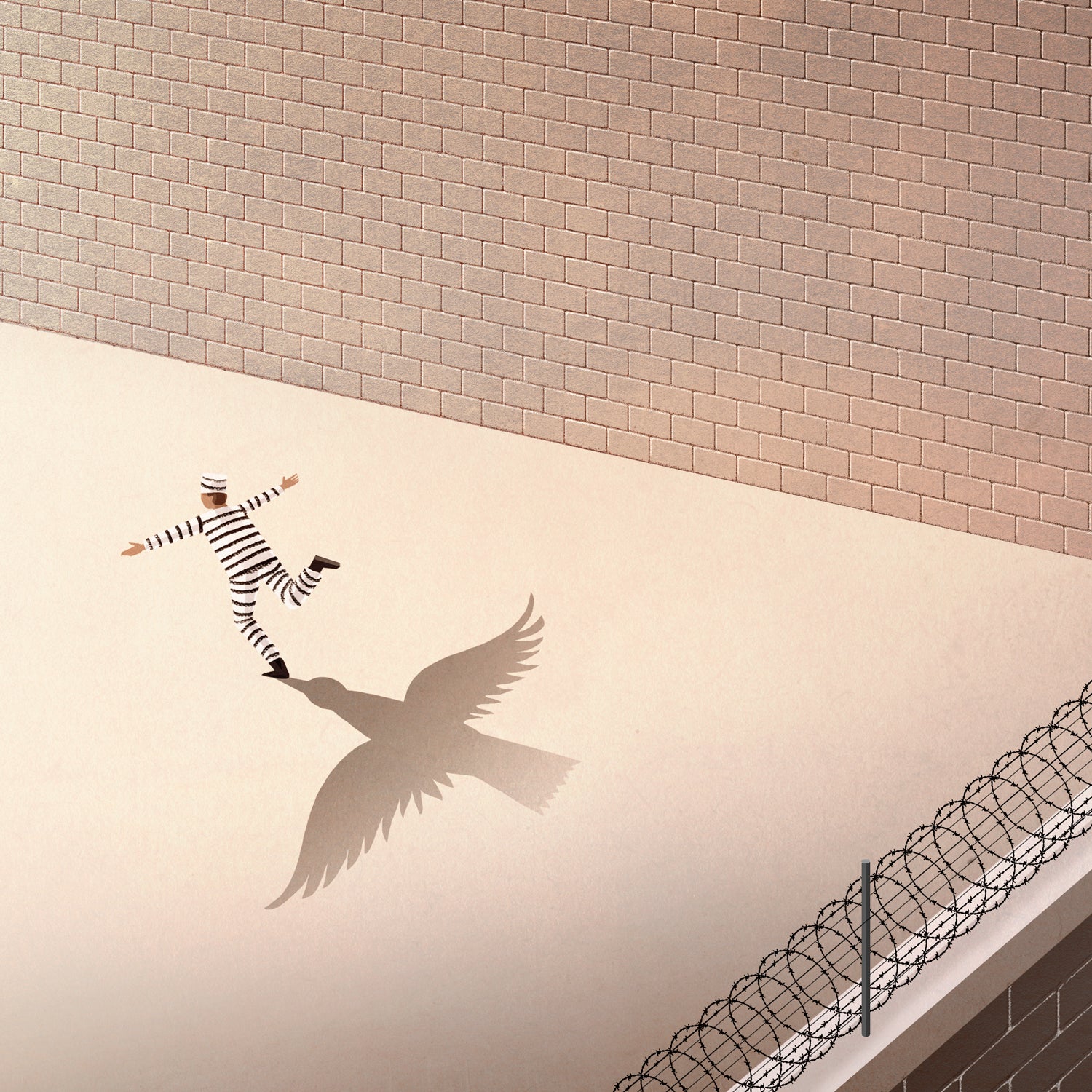I run inside , around a quarter-mile track surrounded by gigantic walls and barbed-wire fences. The track is half dirt and half concrete. It circles the “Field of Dreams,” a baseball diamond with a tennis court, basketball court, and pull-up bars nearby.
My past propels me to chase acceptance and freedom.
The men I pass on the track wear sportswear or blue cotton/polyester-blend pants with shirts stamped “CDCR PRISONER.” Many have gray hair and walk with canes. Others are youngsters, barely old enough to be in an adult penitentiary. Often the latter started as the former, perpetrators of their own crimes but victims of sentencing laws delivering life with the possibility of parole—only at the end of, or well beyond, life expectancy.
I am one of these men. At 46, I am serving a life sentence with the possibility of parole, when I’m sixty-something, for killing an armed man who robbed a friend.
I fear dying in prison, alone, in California, so far from my family in New York City. I’m even more horrified by the idea of ending my days as a loser, rejected from society. l want to live long enough to overcome serving decades in prison and to make up, as much as is possible, for what I did.
I’ve read that exercising can add ten years to a person’s lifespan. And more recently, I’ve learned that marathon running can add even more. I need those extra years. I run for longevity and to gain the maximum number of years possible to turn my failure into success.

There are a few other reasons why I run.
Distance runners know that running a marathon is very painful. No amount of training can relieve the agony of cramping or pounding your feet against concrete—jarring every bone in your body, threatening its alignment with each step—for more than a hundred laps. Just like no amount of good deeds can make up for taking a life. I’m not simply running to live longer. I’m running for punishment and redemption, all at the same time. I run to prove I can endure anything, including living in a four-by-nine-foot cell for 14 more years. I am running for success and for acceptance.
I run to prove I can endure anything, including living in a four-by-nine-foot cell for 14 more years.
I don’t run alone. We have a running group here at San Quentin called the . It’s made up of about 35 incarcerated men, plus outside volunteers, mostly recruited by our sponsor and coach, Frank Ruona. We support each other mile after mile, year after year. Volunteers come from society—professionals like Dylan Bowman and less well-known but no less deserving people like Diana Fitzpatrick, Jim Morris, Kevin Rumon, Jim Maloney, and Rachel Long—and join in a fellowship of runners, celebrating the athletes we are now, regardless of the issues looming in our rearview mirrors.
The club practices every other Monday and runs eight races a year, working up to the marathon distance. Every race, no matter how many miles I complete or what kind of running shape I’m in, the club supports me. “Good job,” they say as I pass by in last place. They tell me how many more laps I have to go and cheer me on. They hold out small cups of water for me to grab on the way past. They even run laps with me as encouragement to finish.
This acceptance from a society that banished me—long before I was ever incarcerated—feels like unconditional love. It’s a whole different kind of peer pressure.
Before I met my fellow runners—before I came to San Quentin—my best friends were a boxer and some drug dealers. l gave my loyalty to them. Back then, I succeeded by hustling outside the lines. These days, the 1,000 Mile Club volunteers accept me as part of society. They see me as a runner and a successful writer. My loyalty now belongs to them instead.
In 2014, with the support of the club, I completed my first half marathon under extreme conditions. I started the race at 8:00 on a sunny July morning. The race was held during Ramadan. As a Muslim, I’d been fasting for the holy month. This meant I hadn’t been able to hydrate before the race and couldn’t do so until that evening. Still, I ran, completing 13.1 miles as the sun melted my skin the whole way.
I often ask myself why I ran that race, knowing in advance how grueling it would be. The answer is that running with the 1,000 Mile Club is an acceptance too powerful to miss.
So far, the half marathon marks the longest distance I’ve completed. Last year, I ran it in 2:39:15, longer than it takes our club’s best runner, Markelle “the Gazelle” Taylor, to glide through the whole 26.2 miles. This year, I’m training to run farther and faster than I ever have before. Every November, the 1,000 Mile Club holds a full marathon. After seeing on TV that , I figure I can, too. After all, my motivations are much stronger.
Rahsaan Thomas is a contributing writer for ; co-founder of , a project fostering mentorship and collaboration between incarcerated and free artists; and vice chairman of the San Quentin chapter of the Society of Professional Journalists.


